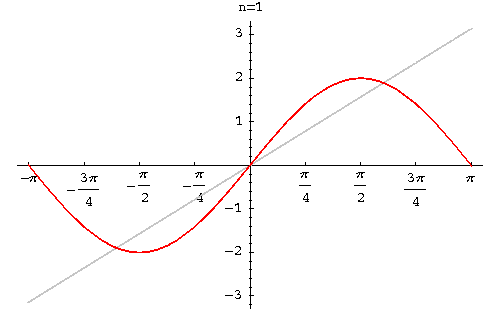Fourier Example: Difference between revisions
Jump to navigation
Jump to search
Jorge.cruz (talk | contribs) |
Jorge.cruz (talk | contribs) |
||
| Line 40: | Line 40: | ||
<math>f(x)=\frac{\pi}{2}+2(sin(x)+\frac{sin(3x)}{3}+\frac{sin(5x)}{5}+...)</math> |
<math>f(x)=\frac{\pi}{2}+2(sin(x)+\frac{sin(3x)}{3}+\frac{sin(5x)}{5}+...)</math> |
||
[[Image:Fourier.gif]] |
|||
==References:== |
==References:== |
||
Revision as of 00:36, 19 January 2010
Find the Fourier Series of the function:
Solution
Here we have
and
We obtain = 0 and
Therefore, the Fourier series of f(x) is







